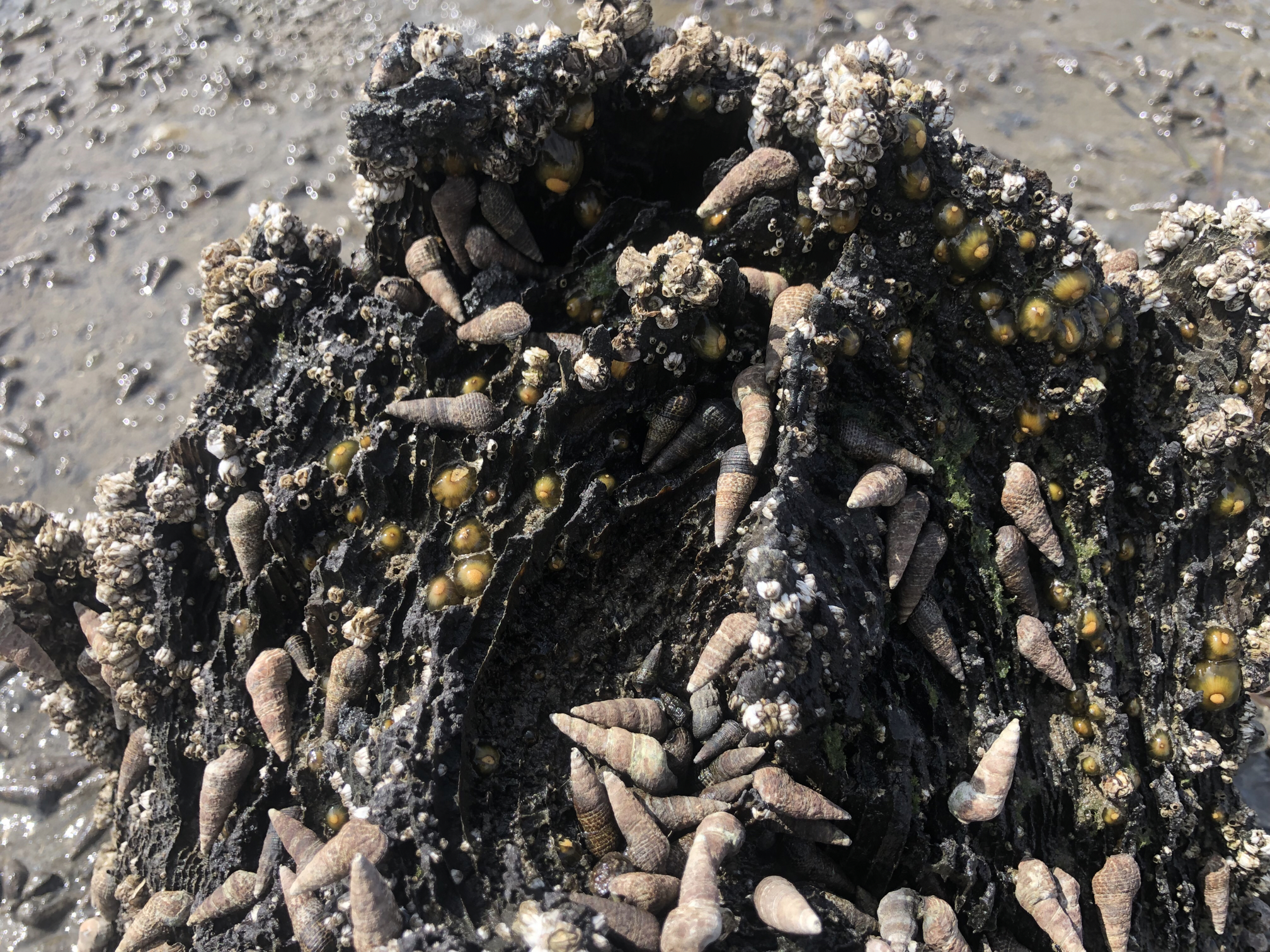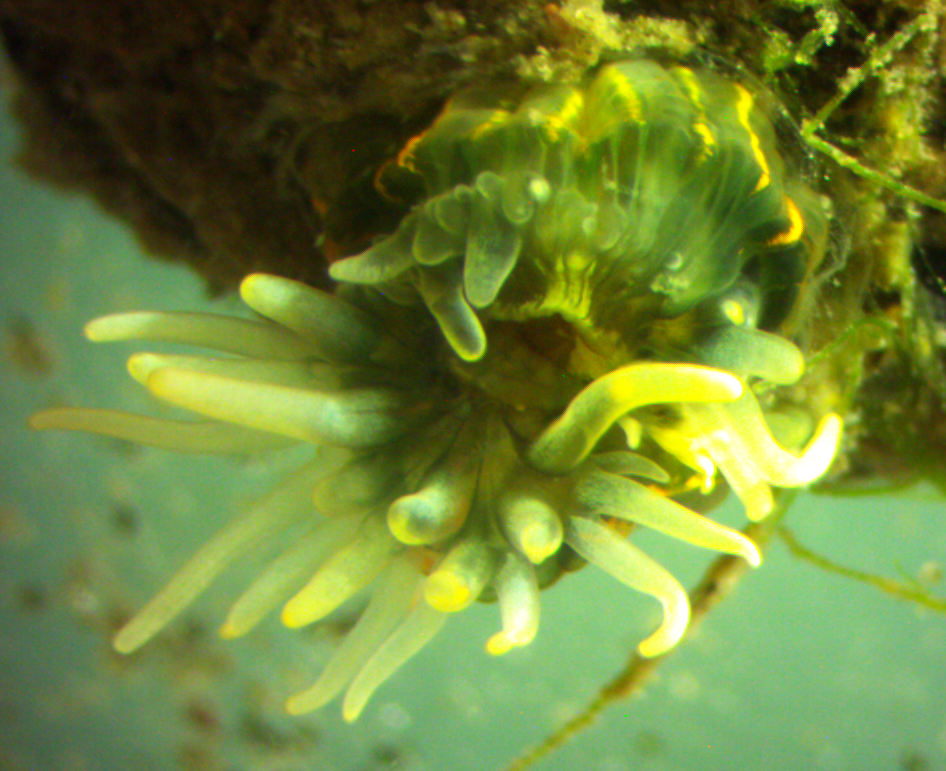Description: Like most (but not all) anemones this small but colorful anemone has a flat pedal disk and adheres to solid objects such as rocks, wood, and shells. It has acontia which it can extrude from the column walls for defense when damaged or disturbed. The column is green (occasionally brownish) with 7-19 orange or yellow (sometimes white) vertical stripes. It has more than 24 but less than 100 tentacles. Height up to 2 (3) cm and 1 cm diameter (up to 4 cm at the base where the pedal disk may spread out).
How to Distinguish from Similar Species: Few other anemones have acontia, and the others in the Salish Sea that do (Metridium spp) are generally orders of magnitude larger than this species and have many more, fine tentacles. Unfortunately, anemones don't always extrude their acontia when disturbed so this is not a completely reliable characteristic. It does not have tubercles on the column wall so when closed it can be confused with small Epiactis species The vertical orange stripes on the column wall are broader than those found in some Epiactis and are quite distinctive. It also does not appear to have colored bands on the oral disk as most Epiactis do although I could be wrong on this.. D. franciscana from San Francisco bay is very similar but the tentacles opposite the corners of the mouth have yellow bases and the column has white stripes.
Geographical Range: Very broadly distributed. Alaska to southern California on our coast.
Depth Range: Intertidal or shallow subtidal
Habitat: Lives in the high intertidal zone in quiet bays and estuaries, often inside shell fragments or empty barnacle tests, cracks in rock or wood, often near mud, or on floats and pilings..
Biology/Natural
History: This small
anemone is easily (and accidentally) transported by humans and is the
most
widely distributed anemone species in the world. It probably originated
in northeast Asia. It is thought to have been introduced into the
Salish
Sea along with oysters imported from Japan. This species may be found
in
aggregations, especially in crevices, due to asexual reproduction
(accomplished
by binary
fission similar
to that of Anthopleura
elegantissima).
This species is fed on by nudibranchs such as Cuthona
perca and Hermissenda
crassicornis.
| Return to: | |||
| Main Page | Alphabetic Index | Systematic Index | Glossary |
References:
Dichotomous Keys:Kozloff, 1987, 1996 (as Haliplanella lineata)
Carlton, 2007
General References:
Harbo,
2011
Kozloff,
1993 (as Haliplanella
lineata)
Lamb
and Hanby, 2005
Ricketts
and Calvin, 1985 (As Haliplanella luciae)
Scientific Articles:
Web sites:
General Notes and
Observations: Locations, abundances,
unusual behaviors:

Diadumene lineata is quite common in some of the muddier portions of Padilla Bay. This photo shows an aggregation of Diadumene lineata and Batillaria attramentaria
clustered on the broken, intertidal top of a piling that is elevated
just above the mud at low tide in eastern Padilla Bay along the
shoreline just south of Samish Island. Photo by Dave Cowles August 2022
Authors and Editors
of Page:
Dave Cowles (2022): Created original page
CSS coding for page developed by Jonathan Cowles
Salish Sea Invertebrates web site provided courtesy of Walla
Walla University
